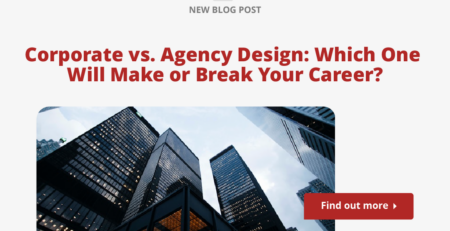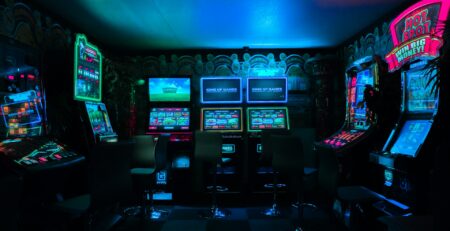The Peak-End Rule: Memory & UX Design
Emotions and biases greatly impact our impressions of past experiences. For UX designers, the experience is everything. Understanding the way people develop opinions and make decisions is the only way to create a user journey that entices and delights.
One of the most famous biases is called the Peak-End Rule, which states that people remember their feelings at the emotional peak of an experience and when the experience comes to a close. Could such a simple premise be true, or at least dependable enough for UX designers to rely on it in their work?
Anyone who has had the briefest introduction to human psychology knows it gets complex pretty quickly. The Peak-End Rule may not be a magic formula for brilliant UX design, but it certainly has some implications for anyone trying to make a lasting experience for other people.
Read on to find out everything you need to know about the Peak-End Rule and how it affects design work broadly and UX/UI design specifically.
Psychological Basis for the Peak-End Rule
The Peak-End Rule is a memory bias that states people tend to have the strongest recall of the moments of greatest emotional impact (“peaks”) and the moments closest to the end of an experience.
This concept found its basis in a research report from 1993 entitled “When More Pain is Preferred to Less: Adding a Better End,” by Daniel Kahneman and Barbara Frederickson.
The two researchers conducted an experiment wherein participants went through two uncomfortable trials. In both trials, they had their hand submerged in uncomfortably cold water for 60 seconds. During the second, however, the participants had to leave their hands in water that was one degree warmer for 30 additional seconds.
Surprisingly, when participants were later asked which trial they would like to repeat, the majority of them selected the second one. Even though they spent longer in the uncomfortable state, the end of the trial was comparatively more pleasant. This phenomenon is called duration neglect.
Additional experiments have been done to find more empirical evidence of the Peak-End Rule, particularly for UX/UI designers who want to create emotional peaks during the user journey.

Biases Within Biases: What Makes the Peak-End Rule Work?
Remember that the Peak-End Rule isn’t so much a law set in stone as it is a biased way of looking at past experiences. It’s an heuristic – a memory tool that relies on less information to make decision-making quicker and easier.
What makes the Rule a bias is that it doesn’t present a logical, accurate, or even reasonable reconstruction of real events. There’s some theorizing that our brains developed this strategy so that we could guide our future decisions based on past experiences without remembering every second of everything that happens to us.
There are two biases that the Peak-End Rule operates on.
- Memory Bias
People are more likely to consider memorable moments that have strong emotional attachments even if they don’t recognize that they felt strong emotions at the time.
Emotions could be positive like happiness or convenience or they could be negative like anxiety or confusion.
Memory bias makes sense in terms of memory storage in our brains. But even though we’re hard-wired to feel and experience life through emotional responses, that doesn’t mean we’re perfect at selecting the moments of most significant emotional experience.
- Recency Bias
We also remember what happened recently better than we can recall events that happened long ago. This has only become more true for many people in the increased stimuli in the internet age.
A corollary bias is called the primacy bias, which describes how people also tend to remember the beginning of an experience strongly. That may seem to counter the recency bias, but they aren’t really at odds.
It has to do with the serial position effect. We remember the first and last items on a list better than we recall objects in the middle.
The PE Rule and UX/UI Design
When you set out to build a design pattern that will delight users, it’s important to understand how they view certain things and how heuristics like the Peak-End Rule affect their overall perception of a product.
Designing emotional high points is clearly important for creating return customers and giving people a memorable experience, even if it’s a product that they will use once or only very rarely. UX research seeks to find out what people enjoy, among other things, so that designers can build that into products.
It’s vital to understand what sorts of things will leave a bad taste in users’ mouths and possibly wreck an otherwise fine experience. One very common method for web designers lately is to build pop-ups into a webpage that appear when users try to navigate away or move the mouse toward the navigation buttons at the top of the screen. It might get their attention, but not always in a positive way.
If you’re trying to end things on a high note after a negative experience, it could blow up in your face if the attempt at positivity is too little or too late. Imagine a restaurant offering you nothing but coupons for your next visit after burning your food, neglecting allergy information, and spilling wine all over the diners’ fancy clothes.
UX designers have to understand the real-life emotions associated with their product or the use of the product to foment authentic relationships with their users. Crafting peaks is more than just making a design pattern that works well.
Limitations of the Peak-End Rule
When trying to use this heuristic to their advantage, UX designers should also be aware that it is not the only cognitive bias at play for users.
Recall the original experiment from 1993 – the event was extremely straightforward and the perception from participants was only recorded on the comfort or pain metric. Although it did illuminate one way that people recall experiences from their past, it’s far from an accurate representation of more complicated events.
The user journey and overall customer experience, for example, are incredibly complex and could stretch over the course of hours, days, or months. Once customer loyalty is established, many individual events could coalesce into one lifelong customer experience.
Whatever its length, the course of the user journey is likely to have many different emotions balanced together. Rather than one primarily positive or negative emotion presenting to different degrees throughout, it will contain disparate feelings like indecision, speculation, comprehension, satisfaction, confusion, frustration, and many more.
One study sought to measure the applicability of the Peak-End Rule to more emotionally complex situations using a virtual reality movie about artificial intelligence. Events within the movie, which placed the viewer in the body of an android who had just had memory implanted and been awakened by two scientists, were both positively and negatively valenced.
What that study found was that for more complex situations, the Peak-End Rule was not the most common memory heuristic. Average emotions and the degree of those emotions over the entire course of the experience, rather than at the peak and the end, were better predictors.
Another study found that participants relied on average emotions and also on the presence of low emotional points in addition to peaks when discussing either very good or very bad moments from the previous day. This experiment shows that multi-episodic experiences are not processed by our memories using the same patterns as shorter, simpler experiences.
Since design patterns frequently provide an aggregate customer experience over the course of many interactions, this last study is likely to be just as important for UX designers as the Peak-End Rule itself. Designing to both average emotional feeling/intensity and the Peak-End Rule is the best way to give products the widest appeal.
Catering to Two Minds
Kahneman, one of the researchers responsible for the research that led to the Peak-End Rule, also felt that human memory was split into two personas: the experiencing self and the narrating self.
The experiencing self is the immediate, present-moment mind that sees and responds to stimuli in real-time. The narrating self is responsible for turning experiences into impressions and integrating those impressions with other past experiences. The goal of the narrating self is to craft a story from discrete moments.
UX designers must take both of these selves into account. Although there’s not much we can do about users’ past experiences, it can’t be ignored that interacting with any design pattern will have to be integrated with the past experiences and preconceptions users already have.
User research is the best way to find out about preconceptions and also identify what peak emotional moments might look like for future users. Remember that novel experiences also stand out among past experiences, so mimicking other peaks is unlikely to be as successful as crafting new ones.
Negative Moments & the Peak-End Rule
According to both the Peak-End Rule and the average emotions approach, limiting moments that users will code as negative will build a better user journey. That might sound like UX 101, but within the context of heuristics, it means reducing downtime, confusion, tediousness, and other negative emotions in addition to the harsher ones like anger or sadness.
You can’t control all the negative moments. Connectivity and other infrastructure issues are still going to happen at some point, but you can still design around them to preserve an overwhelmingly positive customer experience even when conditions are less than ideal.
The Peak-End Rule also has particular relevance in the realm of eCommerce and subscriptions. One of the most common ways to ruin an otherwise fine user journey is a shoddy or half-baked shopping cart feature that’s more obtrusive than it is convenient.
For example, users typically love to be able to add items to their cart and continue shopping. Occasionally, a design won’t let users add items to their cart without going to a new page. When users click a ‘keep shopping’ button, they’re sent back to the page they were on before. This is the kind of inefficiency that might not make a big splash at first but will negatively impact the overall experience right at the end.
How to Create Positive Peaks in UX Design
Each person has their own narrative self and a unique history of past experiences. Even if you can’t create a one-size-fits-all product for every individual, there are some strategies for building a user journey with mass appeal.
- Highlight the Positive
Reinforcement is important, especially for new users of a given design pattern. Whatever path you create, it’s going to need some signposts so users know when they’re going the right way.
Breadcrumbs are one solution to this. A literal map that shows how the user has gotten where they are allows them to go back to an earlier stage. It also might help them remember more of the whole experience rather than just one peak and the end.
Affirmations like you’d find in designs for online learning platforms are another great example. Not only can you reward users with praise when they get a question correct, but you can also use color changes to signify when a task has been completed.
- Embrace the Social
Social media changed the digital landscape for good. Now all kinds of apps and services are including new social aspects in the newest iterations of their designs. Sharing information like you can on streaming services such as Spotify helps generate organic suggestions for users to improve their experience and avoid cognitive overload.
Referral systems are great ways to let users be social while also bringing in new customers. Different perceptions that result from the Peak-End Rule don’t become set in stone right away – the perceived opinion of others matters as well. When people recommend your product, that’ll have a positive effect.
Using social media services also lets brands give customers greater access for complaints, suggestions, or special promotions. Make sure this is integrated into your design for an optimal customer experience.
- Improve on Negatives
When it comes to how we perceive non-traumatic negative experiences, people prefer to have things improved rather than have the experience end altogether. Granted, this depends on the severity of the negative experience, but it holds true for the majority of user experiences.
The exact thing you want to avoid is people abandoning your product. So if things aren’t working out, the last thing you want is to simply end their journey with an apology or a suggestion to try again later.
Even if unforeseen circumstances or glitches turn things sour, build fixes into the design so that users can experience a solution beyond just closing them out of the product.
This includes things that are outside your control. For example, if a user makes it all the way to the final “Pay Now” screen and their payment method is declined, simply leaving them there will give them a bad final impression even though it’s not the company’s fault.
Build a “Save This Deal” button or something similar and the user can save face, address whatever issue occurred, and still complete the transaction without issue at a later date.
- Create Callbacks
Cater to the narrative self of your users by creating final steps that also encourage the user to return when they need your product again in the future. End on a high note and also give them tools to make their next experience even easier so that their narrative self is more likely to file your brand in the “Would Use Again” file.
Even seasonal or rarely-used products can use this tactic. For example, even though you may only use TurboTax once a year, they still let you set up a login that makes it easier to retrieve past years’ tax information to speed up filing in the future.
Many companies use account creation as a way to incentivize return visits and also make the end of each experience positive. Consider airlines and their incredibly effective rewards programs that create return customers for decades.

Conclusion:
The Peak-End Rule isn’t the only heuristic people use to make quick decisions based on past experience, but it is one of the most common. It’s a cognitive bias that operates using smaller biases and also has lots of value for UX designers.
Users tend to remember positive and negative emotional peaks as well as the first and last portion of their experiences. Build designs that cater to these potential biases and you’ll be able to give users a fantastic experience and hopefully encourage them to become return customers for a long time.












